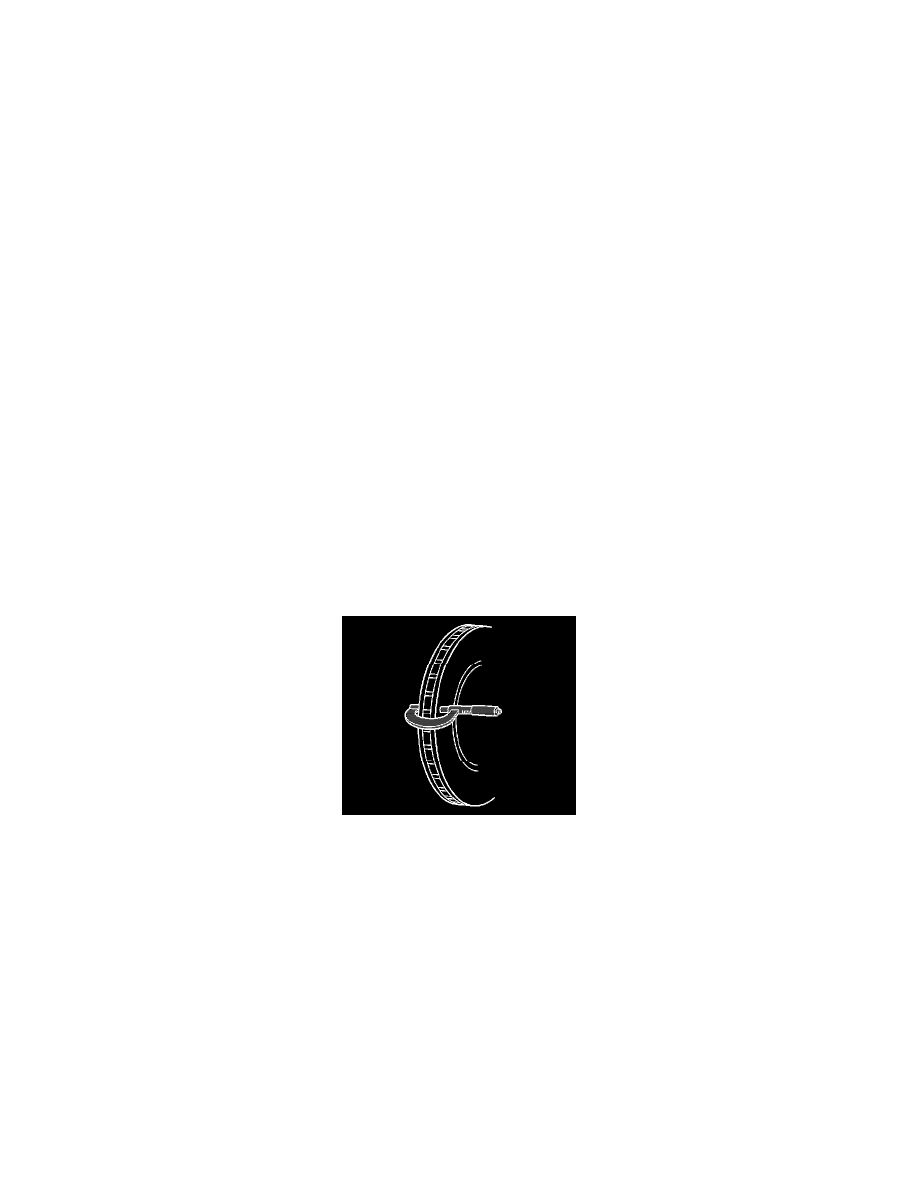Silverado 1500 4WD V8-6.0L (2010)

*
If the lathe is not equipped with a non-directional finishing tool, apply the finish with a sanding block and 150-grit aluminum oxide
sandpaper.
3. After applying a non-directional finish, clean each friction surface of the brake rotor with denatured alcohol, or an equivalent approved brake
cleaner and wipe each friction surface using a clean shop towel to remove metal particles remaining from machining. Repeat the cleaning
process if necessary to remove all metal particles.
13. Remove the brake rotor from the brake lathe.
14. Measure the assembled LRO of the brake rotor to ensure optimum performance of the disc brakes. Refer to Brake Rotor Assembled Lateral
Runout Measurement (See: Brake Rotor Assembled Lateral Runout Measurement).
15. If the brake rotor assembled LRO measurement exceeds the specification, bring the LRO to within specifications. Refer to Brake Rotor Assembled
Lateral Runout Correction (See: Brake Rotor Assembled Lateral Runout Correction).
Brake Rotor Surface and Wear Inspection
Brake Rotor Surface and Wear Inspection
Warning: Refer to Brake Dust Warning (See: Service Precautions/Technician Safety Information/Brake Dust Warning).
1. If the inboard friction surface of the brake rotor is not accessible, reposition and support the caliper with the brake pads. Refer to Front Disc Brake
Pads Replacement (JD9, JF3, JF7, JG4) (See: Brake Pad/Service and Repair/Removal and Replacement/Front Disc Brake Pads Replacement
(JD9, JF3, JF7, JG4))Front Disc Brake Pads Replacement (JH6, JH7) (See: Brake Pad/Service and Repair/Removal and Replacement/Front Disc
Brake Pads Replacement (JH6, JH7)) and/or Rear Disc Brake Pads Replacement (JD9) (See: Brake Pad/Service and Repair/Removal and
Replacement/Rear Disc Brake Pads Replacement (JD9))Rear Disc Brake Pads Replacement (JH6, JH7) (See: Brake Pad/Service and
Repair/Removal and Replacement/Rear Disc Brake Pads Replacement (JH6, JH7)).
2. Clean the friction surfaces of the brake rotor with denatured alcohol, or an equivalent approved brake cleaner.
3. Inspect the friction surfaces of the brake rotor for the following Braking Surface Conditions:
*
Heavy rust and/or pitting
Light surface rust can be removed with an abrasive disc. Heavy surface rust and/or pitting must be removed by refinishing the rotor.
*
Cracks and/or heat spots
*
Excessive blueing discoloration
4. If the friction surfaces of the brake rotor exhibit one or more of the Braking Surface Conditions, the rotor requires refinishing or replacement.
5. Using a micrometer calibrated in thousandths-of-a-millimeter, or ten-thousandths-of-an-inch, measure and record the scoring depth of any grooves
present on the rotor friction surfaces.
6. Compare the groove scoring depth recorded to the following specification:
Brake rotor maximum allowable scoring: 1.50 mm (0.059 in)
7. If the brake rotor scoring depth exceeds the specification, or if an excessive amount of scoring is present, the rotor requires refinishing or
replacement.
Brake Rotor Thickness Measurement
Brake Rotor Thickness Measurement
Warning: Refer to Brake Dust Warning (See: Service Precautions/Technician Safety Information/Brake Dust Warning)
1. If the inboard friction surface of the brake rotor is not accessible, reposition and support the caliper with the brake pads. Refer to Front Disc Brake
Pads Replacement (JD9, JF3, JF7, JG4) (See: Brake Pad/Service and Repair/Removal and Replacement/Front Disc Brake Pads Replacement
(JD9, JF3, JF7, JG4))Front Disc Brake Pads Replacement (JH6, JH7) (See: Brake Pad/Service and Repair/Removal and Replacement/Front Disc
Brake Pads Replacement (JH6, JH7)) and/or Rear Disc Brake Pads Replacement (JD9) (See: Brake Pad/Service and Repair/Removal and
